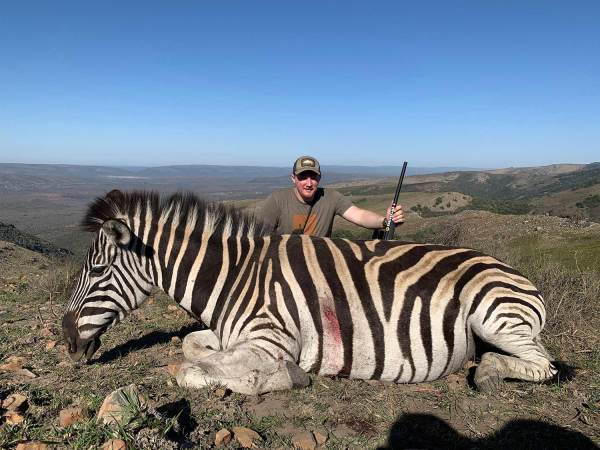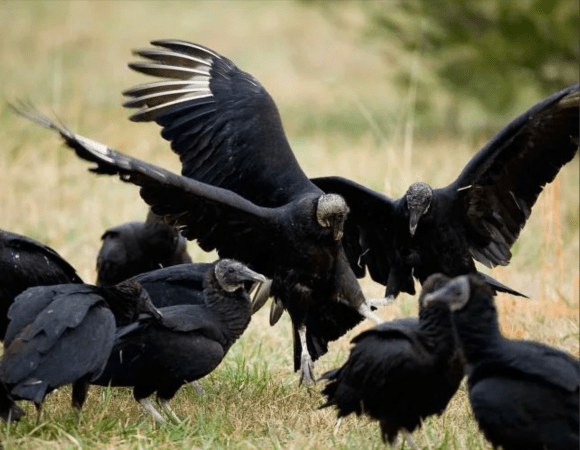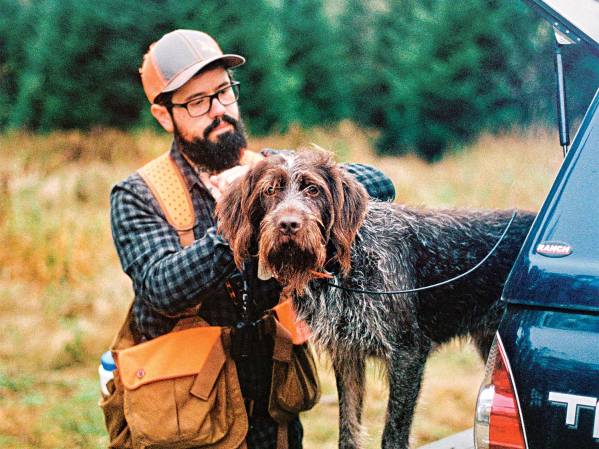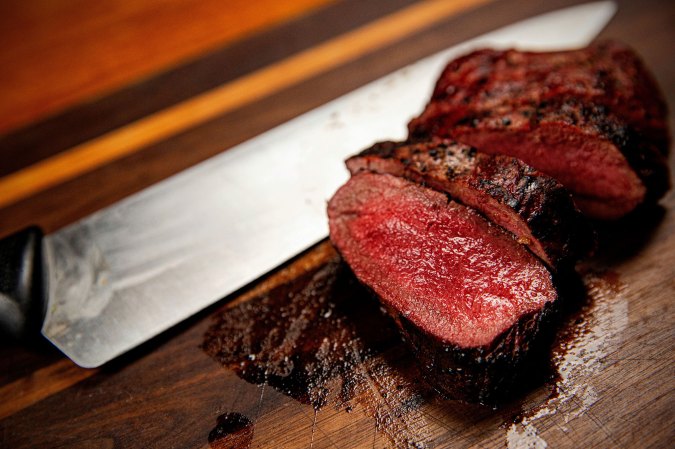Glassing for big-game might seem easy because of the sheer size of the quarry you are in pursuit of, but even having the best optics won’t guarantee your success. Not every hunter needs to rely on glassing, but if you’re in the west or hunting the mountains, becoming proficient at spotting game will often make the difference between killing an animal or eating your tag.
Making Glassing Mistakes
“We can’t find any legal rams,” a pair of hunters told a friend of mine when they crossed paths.
The pair had been hunting in the same drainage as my Friends Frank and Carrie—and had even passed by their camp at a brisk pace only a couple days before.
When recounting the story, Frank told me that he did his best to “play it cool” and not glance too often at the legal ram he could see on the mountain behind the other hunters while being told that there weren’t any legal rams around. Frank had watched the ram from a good vantage point, and could see that he was legal. After the other hunters—heading for home—continued on their way, Carrie killed that ram. The other hunters had failed to see what was right in front of them.
While backpacking into the area, Frank and Carrie decided to camp in a spot that would give them a good view of the surrounding area—despite the dense clouds and fog when they arrived. They’d wait it out.
“We’re going to find your ram from right here,” Frank told her.
The hunters that would be heading home empty-handed in a few days also passed through the same spot, electing to continue. This type of oversight happens more than you think, particularly to hunters new to mountain hunting. I’ve seen numerous hunters walk right past rams feeding on a mountainside or ride their four-wheelers by bull moose that simply laid down to let them pass. Finding and spotting game isn’t rocket science, but there are several key things that will make you better at it.

Glass for Big-Game During Their Active Times
Anytime—and pretty much anywhere—you’re glassing for big-game, the best time to look for them is when they are up and moving. These times will vary depending on the species and location, but virtually all animals are easiest to locate when they’re on their feet.
Even white Dall sheep can sometimes seem nonexistent on a relatively barren landscape. I’ve spent hours glassing into expansive basins and big canyons, seeing nothing all day. Often at the end of a long afternoon of glassing, I’ve seen sheep appear everywhere when the air begins to cool in the evening.
Animals whose colors allow them to blend into their surroundings are exponentially more difficult to spot when they are bedded—often in shade and cover. Learn about the animals you are after and focus your time on glassing—rather than hiking—during these active times.
Be Patient When You Glass for Big-Game
A nearly universal approach when it comes to glassing for big-game is to first look for the easy-to-spot animals or focus on the good-looking spots—these might be rock-bordered alpine meadows for sheep, or shady hillsides for bedded bucks. Depending on an animal’s habits and environment, they’ll often be in predictable areas during certain times of the day and year. Everyone will develop their own unique methods for glassing—and high-grading isn’t wrong. The key is to then look more carefully and give it time.
When I sit down to glass, I’ll first do quick sweeps, focusing on those good-looking spots where I expect to see game. After that, I’ll slow down and look carefully in grid patterns over everything in-between. Near, far, then back again and repeat. Getting in a hurry is one of the biggest mistakes you can make when glassing. Animals that aren’t in the open can be very difficult to spot, and sometimes you might spot an animal on the third or fourth time you look an area over. My first Aoudad ram had been bedded—hidden in plain sight—less than 300 yards across a canyon. The aoudad we saw clustered atop a rock outcropping—that we could see easily—were only a fraction of what was really there. The longer we glassed, the more we saw.
If there is a single most-important tip for finding more animals when you glass, it’s to sit, watch, and wait. Slow, patient glassing is almost always more productive. You may be staring at hillside for an hour through your binoculars before catching a single white flick of a deer’s tail. A lot of emphasis is placed on hiking and covering ground, but if you aren’t patient when you need to be watching, you’ll hike right on by what’s right in front of you.

Use Task-Specific Equipment to Glass for Big-Game
Your grandfather probably killed most of his mule deer and elk with a set of binoculars and a Model 70. But there are more optics at your disposal today than there were all those years ago, and you should take advantage. Using task-specific equipment for your hunt will certainly make glassing easier and make you more effective.
If it’s my comfort zone—DIY hunting Dall Sheep in Alaska—a medium-magnification set of binoculars (8x or 10x) and a quality spotting scope that tops out at 60x are ideal. I currently use Swarovski 10x42mm EL Range binoculars and a Swarovski STS 20-60x65mm spotter. Use the best glass you can afford, but if that’s not top-end stuff, it’s not a deal breaker. Learning how to glass for big-game effectively is more important than having the best glass.
A stable tripod is another gear item that’s well-worth its weight, and if you have a mount to use your binoculars on your tripod, that will only help. Dall sheep often aren’t hard to spot, so I use my binoculars to locate them, then the spotting scope to evaluate their trophy potential and legality. There are lots of great tripods out there, and for backpack hunting, I really like the Spartan Precision Equipment Ascent tripod. It’s durable, easy-to-use, I can use the legs as trekking poles, and I can use it as a shooting rest as well.
If you’re glassing for animals that blend into their surroundings well—like Coues deer—a tripod mount for your binoculars—or even a dedicated set of 12x or 15x magnification binoculars for glassing from a tripod—can be extremely helpful. Binoculars on a tripod offer a very stable image with a wide field of view. There are lots of different styles of tripod adapters like Leupold’s adapter tray—onto which you strap your binos. Others like the Aziak tripod adapter clamp onto a barrel of your binoculars and can slide into an Arca-Swiss rail tripod. A spotting scope is often appropriate to have on the list for many of these hunts—but usually for trophy evaluation.
Don’t Look for Animals, Look for Shapes and Colors
If you’re glassing for big game, your instinct will be to look for the animals themselves. This will usually work for the easy ones in the open, but it’s not best for spotting animals that are partially obscured, or at a different distance than you expect.
When you pick up your glass, you have a subconscious idea of what you’re looking for. When you’re looking to spot a whole deer or sheep, it’s easy to miss what’s right in front of you. Instead, look for shapes, colors, and tones that don’t quite match the surrounding landscape. You might be able to pick out the potato-chip color of a bull elk’s hide through the brush or trees, or the dark color of a moose’s flank.
Often, only part of an animal will be visible, or it may be positioned in a way that your eye doesn’t immediately recognize it. You might see nothing till you notice the pale rump of a bighorn sheep—then notice all the other ones bedded around him. You may spot a single antler sticking out from behind a tree or bush, or the circular top of a ram’s horns peeking above a rock on the skyline. Sometimes it’ll be a spot that doesn’t look quite like the surrounding terrain that will give an animal’s position away.
When glassing for sheep for example, I spot lots of white-colored rocks. I’ve even pulled the spotting scope out of the bag to inspect more rocks than I care to admit. Two things I look for when glassing for sheep are legs and heads. Even from miles away, if I see a suspicious-looking spot, I’ll watch it. If it’s a bedded sheep, usually a head will be sticking up. If it’s on its feet, I’ll usually be able to see legs—a shape that’s not common among rocks.
Looking for things that are out-of-place can also help because animals will often appear smaller or larger than you expect them to—depending on distance and the landscape. You can’t help but have a picture of what you expect to see in your mind, but once you get tuned into the size appearance of the big game you’re glassing for in a particular spot, it’s easier to find them.

















